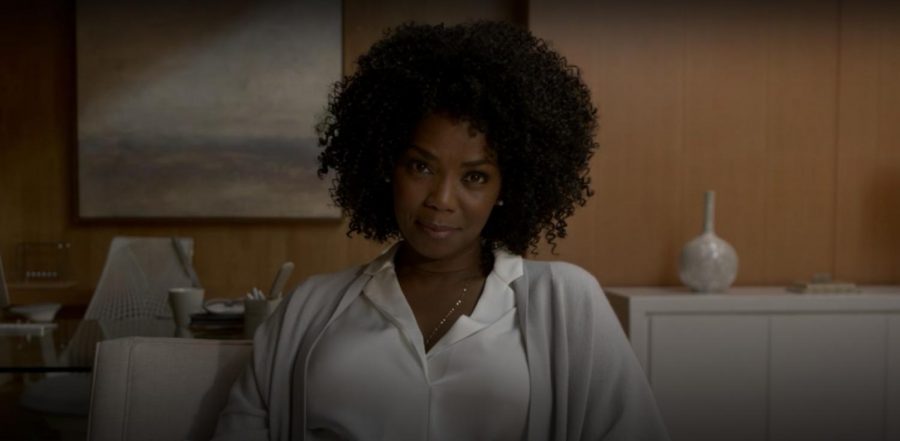‘American Horror Stories’ actress Vanessa Estelle Williams talks ‘Rosemary’s Baby’ influence, work in the horror genre, warning Billie Lourd about summoning dark forces
August 10, 2021
Newborn babies can be a real nightmare.
“American Horror Stories” presents a new terrifying story each week set in the world of “American Horror Story,” featuring familiar and new cast members from the original series. Vanessa Williams (“Candyman”) plays a therapist named Dr. Eleanor Berger who tries to counsel Liv (Billie Lourd), a new mother who fears her baby is being stalked by a demonic entity in the newest episode titled “Ba’al.” The Texan spoke with Williams about her work on the spine-tingling horror series.
The Daily Texan: Considering the fact that you were in the horror classic “Candyman” from 1992, is this genre something that you gravitate toward?
Vanessa Williams: I was in “Candyman” (1992), I am in “Candyman” (2021) coming up that’s dropping in a couple weeks. My horror trajectory is so circumstantial. It’s not something that I sought, it’s something that sought me. … I like doing iconic works; being involved in impactful projects, so any opportunity to make a sort of impact on the culture and be in the zeitgeist, I’m down for that. I’m blessed to have those opportunities. This was an offer … (that) every actor lives for: “Vanessa can you come play with us?” And I was like, “I absolutely can, you had me at ‘Ryan Murphy!’” I’m a fan of the parent story of “American Horror Story.” (I) really loved how it’s so based in the horror and history of American history. These little known stories that get to be dramatized. Every season we get into a whole new world. … It’s a wonderful thing to see the actors keep recurring, take on new roles on a new platform. It’s a testament to their craft. It’s a testament to the writing. To be a part of that family, I’m really looking forward to being among them that get to recreate and retell a different kind of story. It’s thrilling and fascinating and I consider it a wonderful blessing.
DT: How does it feel to officially be a part of the “American Horror Story” universe?
VW: You feel that someone has been looking at your work. Especially when you get offered a role. … I feel very validated and seen.
DT: Were you a fan of “American Horror Story” before joining the spin-off?
VW: Absolutely. You couldn’t be on the planet and not be. … I did a deep dive into season 1 and Coven. I’m so grateful to have FX and Hulu so that you can really see it in the daytime and take breaks when you have to. … I’m a scaredy cat. When I watch, I stop and I google the house or the particular character that the season is dealing with. That’s really fascinating and satisfies my curiosity so well.
DT: What’s your favorite season so far?
VW: I’m really enjoying Coven. But really, all of them are rich because the work of the actors and how they flesh out (Murphy’s) vision is so marvelous. When you know the source material it engages you even more, it grounds it even more. … I love being satisfied when I’m watching something in a way. … We’re so satisfied with the revenge twist in “Ba’al.” Coming from a classic “Rosemary’s Baby” type story where we are going to victimize the mother of a new baby which is always one of the most vulnerable times in a woman’s life. It says something about where we are as a culture that she is the one with the money and that she is such a boss that in the end, she even bosses the demon. … It speaks to women’s empowerment.
DT: Was the “Rosemary’s Baby ” influence something you used in your preparation for the role?
VW: For me, I didn’t go back and watch “Rosemary’s Baby” because (the “Ba’al” script) was so contemporary and the material was so wonderful. I immediately recognized the similarities in that this was a classic tenpole that we were examining for today’s audience. What I got into in preparing was really dealing with this idea of pareidolia. I had to research the meaning, the phenomenon. How to pronounce it properly. It is a real thing. … I love when my work teaches me new things and I get to be the vehicle that conveys that to the audience, grounding it in reality. Not just any kind of fluff to suspend our disbelief but really ground it in actual phenomenon and terminology. Then people like me can go deeper. … If you google it, you can see that people will see faces on a car on a tea kettle. That’s the tendency of our human brain to make shapes and faces and familiar things, symbols that we recognize out of things that we see.



